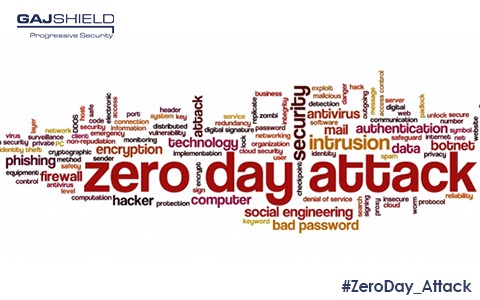The growing threat of zero-day attacks and how to prevent them
, hackers’ attempts to steal or destroy critical data are also growing. These attempts are not only growing in numbers but also in sophistication. And as a result, many cyberattacks exploiting previously unknown vulnerabilities, i.e., zero-day attacks, are on the rise.
If you ask cybersecurity professionals what the biggest external threat to their enterprise is, they’ll probably say it’s the one they haven’t encountered yet. With technology rapidly evolving by the day and data becoming an increasingly valuable commodity, hackers’ attempts to steal or destroy critical data are also growing. These attempts are not only growing in numbers but also in sophistication. And as a result, many cyberattacks exploiting previously unknown vulnerabilities, i.e., zero-day attacks, are on the rise. Thus, zero-hour protection is increasingly becoming a priority for CISOs and cybersecurity teams. And with new unprecedented threats emerging every day, businesses can no longer take a reactive approach towards cybersecurity. 
The rising menace of zero-day attacks
Zero-day attacks make up a significant portion of cyberattacks encountered by enterprises. It has been reported that 30% of all malware attacks are zero-day exploits. And if the high occurrence wasn’t worrying enough already, the success rate of zero-day attacks is extremely alarming. In 2018, 76% of successful attacks on enterprise endpoints were zero-day attacks, compared to a mere 19% of known threats. As enterprises continue to ramp up their security systems to prevent any and all known threat, zero-day attacks are emerging as the new ace up the sleeve for cyber attackers. Thus, no matter how advanced or cutting-edge an organization’s cybersecurity system may be, zero-day exploits ensure that cybercriminals always remain a few steps ahead of enterprise cybersecurity teams. Since the vulnerabilities exploited by these threats are unknown to cybersecurity personnel, security patches and mitigation strategies cannot be applied in time to prevent damage to the enterprise networks. And as a result, organizations lose valuable data, and consequently, lose a lot of money. And they stand to lose more if they cannot find a way to catch up to cybercriminals who use zero-day attacks.
The need for advanced threat detection capability
The reason for the high success rates of zero-day attacks is in the fact that most traditional firewall solutions are unable to identify the attack signatures of these newly emerging threats. An attack signature is a set of information that describes pattern or sequence of events in which a specific kind of cyber-attack happens. Next Generation Firewall solutions store a library of these attack signatures and are constantly on the lookout for similar patterns in the enterprise networks. They look for applications that behave in patterns similar to those stored in their signature library which is regularly updated with information about more known malware and harmful programs. Upon identifying suspicious behaviors from applications and scripts, the firewall solutions prevent these scripts from running and infecting the enterprise data and other digital assets.
The biggest advantage that zero-day threats have over traditional firewall solutions is the element of surprise. Since traditional firewall solutions have no prior knowledge (i.e., no signatures) of new threats, they go undetected until it becomes too late. Thus, for a firewall or any cyber defense system, the ability to detect a threat as one is the biggest challenge. Only after accurate detection can the cybersecurity system respond in the most appropriate manner and mitigate the potential damage these threats can do. That’s why it is critical for enterprises to focus on and invest in next-generation threat detection and response capabilities.
The role of proactive security in zero-hour protection
Next-generation firewall solutions come with advanced zero-hour protection capabilities that are signature-independent. This means that these firewall systems do not have to wait for updates in their signature databases like most other cybersecurity systems. While other traditional cybersecurity solutions wait for updates in their signature database, next-generation firewalls proactively search for and find virus outbreaks online and block similar programs from gaining access to the enterprise network. With such a solution as a part of your enterprise cybersecurity system, emerging threats lose their element of surprise.
Zero-day attacks are at their deadliest within the hour of the outbreak happening. That’s because this is the window in which millions of users who use traditional signature-based antivirus solutions are most vulnerable to infections, while they wait for the new attack signatures to be released. However, an enterprise protected by a next-generation firewall with proactive security secures is prepared for the new threat in real time almost instantly. As a result, zero-day threats are rendered ineffective against a proactive security solution.
However, while proactive security and zero-hour protection can help your enterprise network spot new, emerging malware and similar threats, you also need a mechanism to block or respond to these threats. You need complete visibility into your own enterprise network so that you can monitor every application and every user for suspicious behavior. In addition to being able to identify suspicious behavior, it is also necessary for you to have a system that can isolate the malicious actors from infecting your enterprise’s critical assets. A next-generation firewall solution does this by sandboxing and quarantining potentially harmful programs. As a result, even if the malware runs as it is designed to do, it cannot harm any critical component of your organization’s network.
This way, a next-generation firewall solution with proactive security and zero-hour protection feature can ensure that you not only keep up but even stay one step ahead of cybercriminals. Such a solution comes with the tools to identify and stop cyber threats from multiple attack vectors, without you and your cybersecurity team having to constantly worry about and monitor the enterprise network.
Get In Touch With Us
Subscribe to our Newsletter
2025 © GajShield Infotech (I) Pvt. Ltd. All rights reserved.
